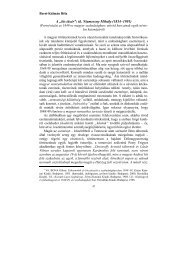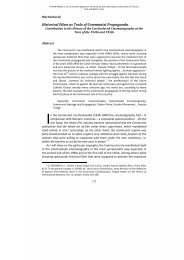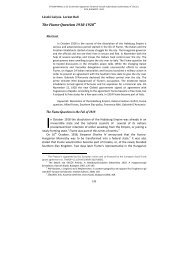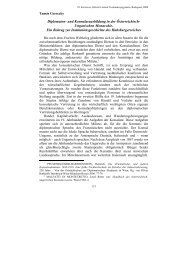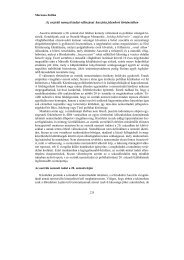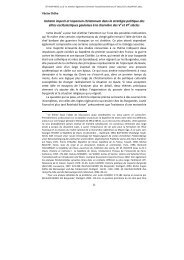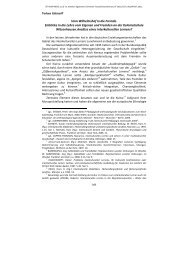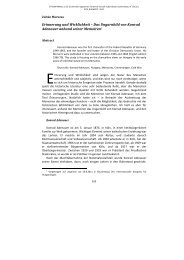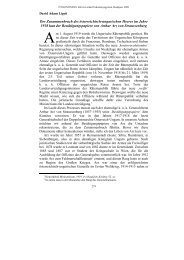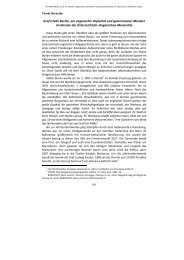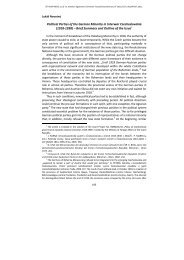The Molotov-Ribbentrop Pact - ELTE BTK Történelem Szakos Portál
The Molotov-Ribbentrop Pact - ELTE BTK Történelem Szakos Portál
The Molotov-Ribbentrop Pact - ELTE BTK Történelem Szakos Portál
Create successful ePaper yourself
Turn your PDF publications into a flip-book with our unique Google optimized e-Paper software.
Conclusion<br />
In the 1930s, pacifism epitomises a collective mentality which transcends<br />
partisan divisions. It is also a transnational phenomenon. <strong>The</strong> German-Soviet<br />
<strong>Pact</strong>, more so than the declaration of war, deeply upsets the pacifism movement<br />
in France. This is the hypothesis we wanted to demonstrate in this brief<br />
communication. <strong>The</strong> resulting progressive ideological switch of the French<br />
communists and their return to ultra-pacifism entirely reshaped this movement.<br />
In September 1939, self-assured, majority, governmental and anticommunist<br />
pacifism switches to anti-governmental and minority pacifism, deeply affected<br />
by the communist support.<br />
After the Finland war, the communists increasingly focus on revolutionary<br />
defeatism, while the other pacifist groups are seen to capitulate by mid-June<br />
1940. A significant number of personalities, who were still campaigning for<br />
peace at the end of the summer of 39, join the Vichy ranks and collaborate with<br />
Nazi Germany. This is the case of Georges Bonnet, Paul Faure and Jean<br />
Mistler, members of the National Council, Marcel Déat, founder of the<br />
Rassemblement national populaire in 1941, or the European federalists who<br />
perceive their projects as justification of German occupation.<br />
141



